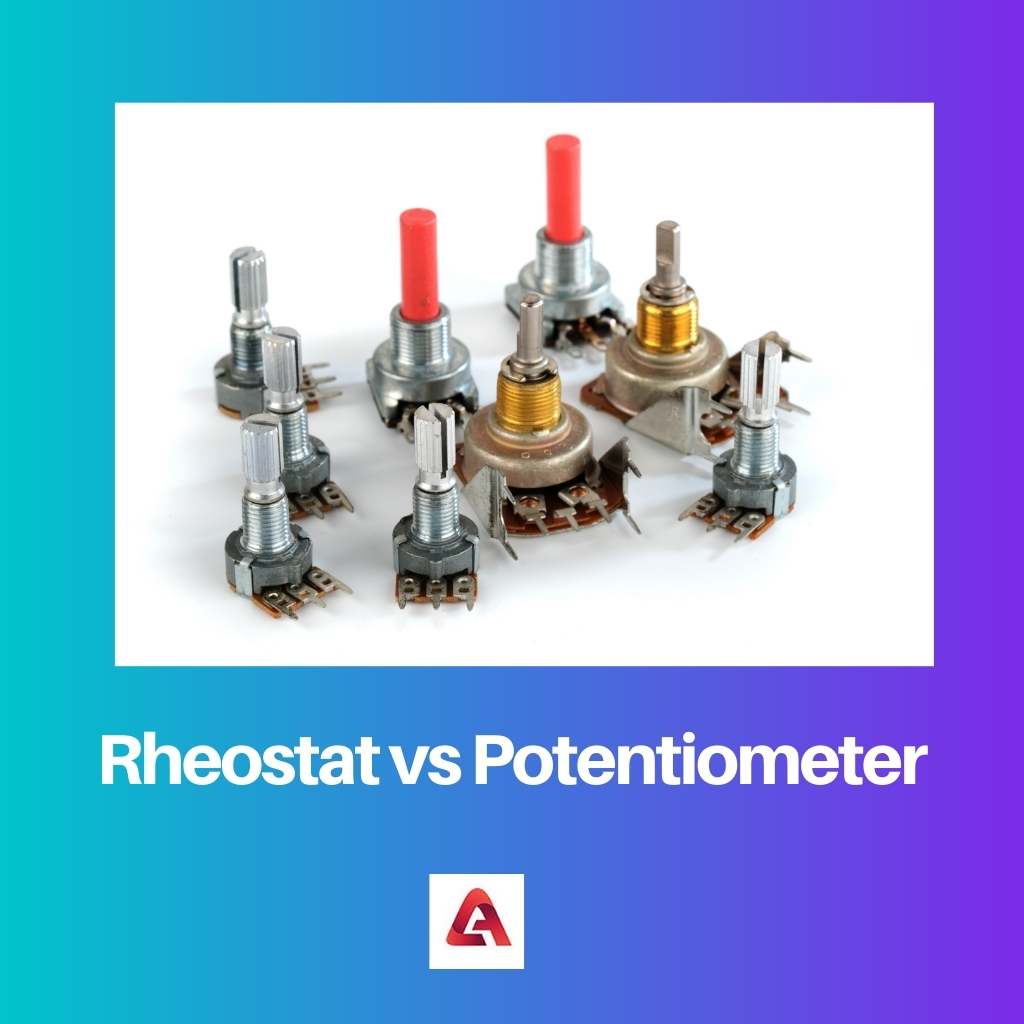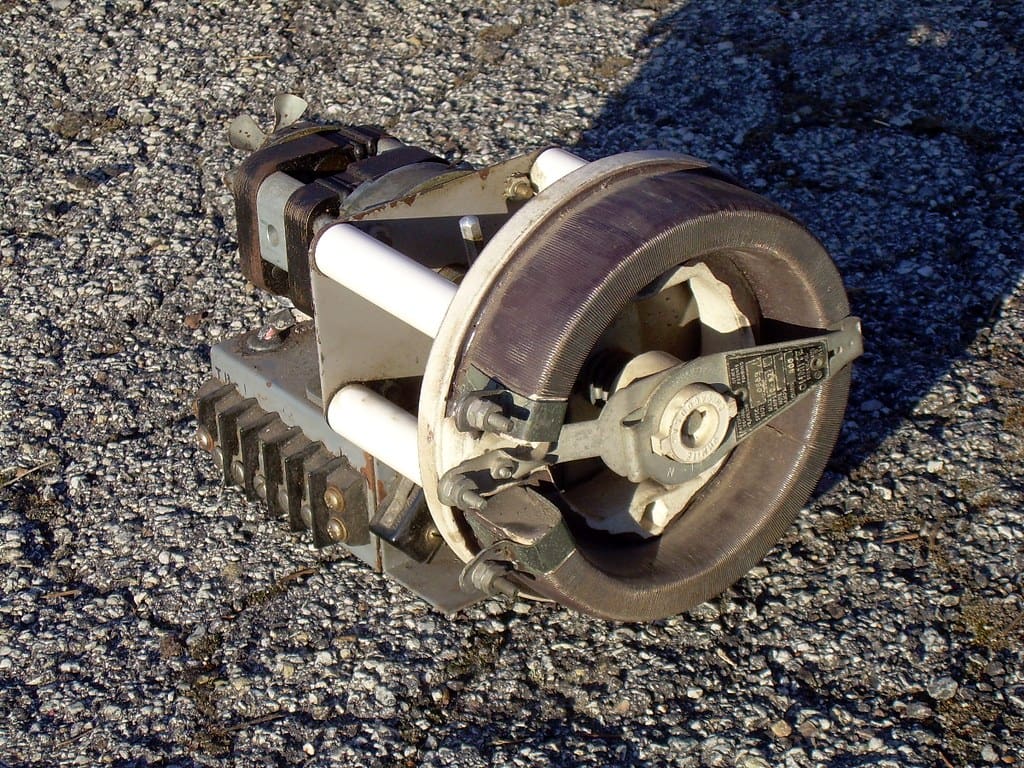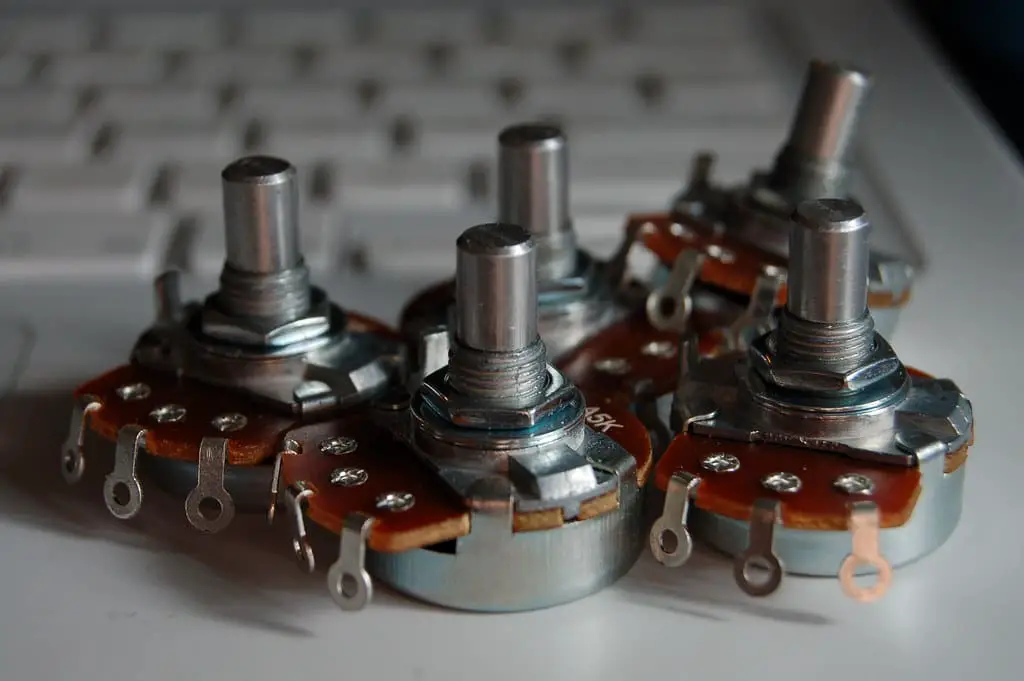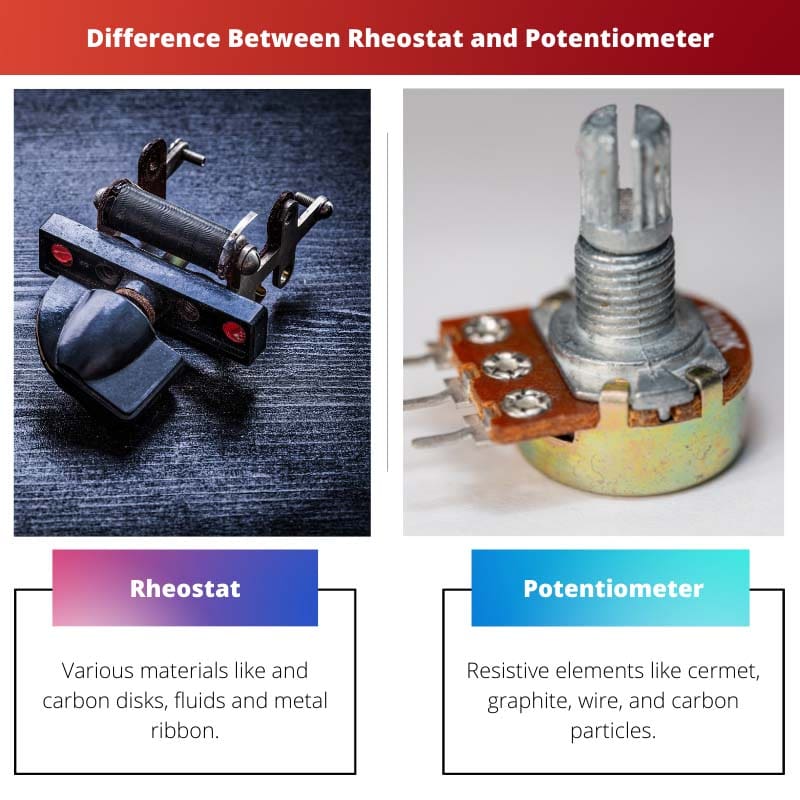The device with a three-terminal configuration is called a variable resistor. Rheostat and potentiometer both come under the category of variable resistors. The function of the variable resistor is to provide a variable amount of resistance within an electrical circuit.
Key Takeaways
- Rheostats control current by varying resistance in a circuit, while potentiometers divide voltage and act as variable voltage dividers.
- Rheostats have two terminals, whereas potentiometers have three for more precise control.
- Potentiometers find use in various applications like volume control and position sensing. In contrast, rheostats control power in high-current applications, such as dimmer switches and motor speed controls.
Rheostat vs Potentiometer
A rheostat is a device that is used to redirect the flow of a current in a circuit, and it is manually controlled by increasing or reducing resistance. Potentiometer is an electronic measuring device that is used to divide voltage in an electronic circuit, and it has a parallel connection.

A rheostat is a device that is used basically to regulate the resistance, i.e., either to reduce or increase the flow of current manually. It is a very common kind of variable resistor. It is a power-controlling instrument used in various appliances like ovens and heaters for managing the intensity of light and monitoring the speed.
A potentiometer is used as a measuring device. It is used to measure the voltage of an electrical device. It can also be used to control the volumes of electrical devices like audio speakers.
Comparison Table
| Parameters of Comparison | Rheostat | Potentiometer |
|---|---|---|
| Made of | Various materials like and carbon disks, fluids and metal ribbons. | Resistive elements like cermet, graphite, wire, and carbon particles. |
| Use | Vary resistance | Measuring instrument |
| Function | Control the flow | Voltage dividing |
| Connection | Serial | Parallel |
| Flexibility | It cannot be used as Potentiometer. | It can be used as a rheostat. |
| Voltage Dividing | Cannot divide | Can divide |
What is Rheostat?
A rheostat is used to vary the flow of current in an electrical circuit. It is controlled manually by increasing or decreasing the resistance. It can change the resistance without any disturbance or interruption.
There are majorly three types of Rheostat. Preset, Rotary, and Linear. Preset Rheostat is used in printed circuit boards usually. Rotary is used when the slider or resistive element of the rheostat moves in a circular direction.
A linear rheostat is used when the slider and resistive element moves in a linear or straight direction. There are various applications of rheostat it is used in devices where high voltage is required, it is also used to dim lights as it can change the intensity of lights, and it is used to control the volume of a device like radio or speed of a motor.

What is Potentiometer?
There are various terms through which different types of potentiometer is used to describe in electronic industry. It includes a trim pot, slide pot, and thumb pot.
Two types of potentiometers can be adjusted manually. They are Linear and Rotary Potentiometer. Linear is when the wiper moves in a straight direction.
It cannot divide voltage. It is connected with a parallel in an electrical circuit. It is used to control the volume in audio systems and acts as a transducer in controlling television.

Main Differences Between Rheostat and Potentiometer
- A rheostat cannot be used as Potentiometer. A potentiometer can be used as a rheostat.
- A rheostat cannot divide voltage. A potentiometer can divide voltage.

- https://aip.scitation.org/doi/abs/10.1063/1.1751472
- https://aapt.scitation.org/doi/abs/10.1119/1.1934883
Last Updated : 11 June, 2023

Piyush Yadav has spent the past 25 years working as a physicist in the local community. He is a physicist passionate about making science more accessible to our readers. He holds a BSc in Natural Sciences and Post Graduate Diploma in Environmental Science. You can read more about him on his bio page.

The article provides a well-structured and informative overview of rheostats and potentiometers, making it an excellent resource for learning about their specific applications in electrical circuits.
I’m grateful for the detailed explanations of rheostats and potentiometers, which have enhanced my understanding of these components in electrical engineering.
The detailed descriptions and comparison table are beneficial for understanding the nuanced differences between rheostats and potentiometers.
The article thoroughly explains the technical aspects of rheostats and potentiometers, allowing readers to gain a deeper understanding of these electrical components.
The detailed descriptions of rheostats and potentiometers provide valuable insights into their specific applications and functionality within electrical circuits.
The article effectively explains the differences between rheostats and potentiometers, allowing for a clear understanding of their distinct functions in electrical systems.
The article presents a comprehensive overview of the applications and differences between rheostats and potentiometers. The detailed descriptions provide a thorough understanding of both components.
The comparison table provides a clear summary of the key differences between rheostats and potentiometers, making it easier to understand their unique characteristics and functions.
Agreed, the detailed comparison table is an excellent reference for distinguishing between rheostats and potentiometers.
The comparison table simplifies the complex technical information and effectively highlights the distinctive features of rheostats and potentiometers.
This article offers a comprehensive analysis of rheostats and potentiometers, and their application in electrical circuits.
I appreciate the clear explanations of the functions and applications of rheostats and potentiometers. This is a valuable resource for anyone working with electrical devices.
Yes, it’s a very informative and detailed article. The comparison table is particularly useful for understanding the key differences between rheostats and potentiometers.
The detailed description of rheostats and potentiometers is very helpful in understanding their specific functions within electrical circuits.